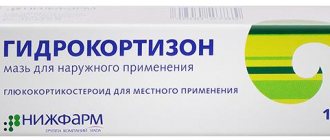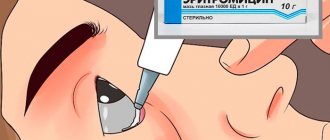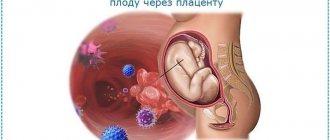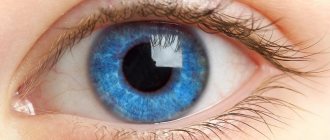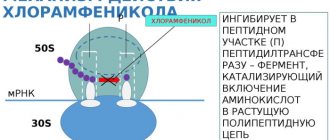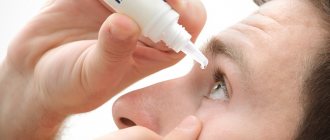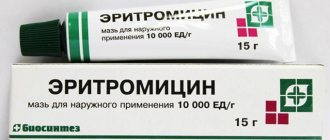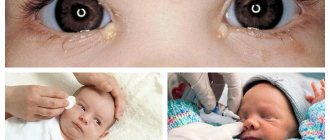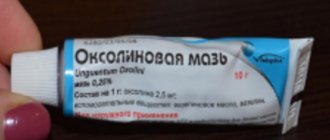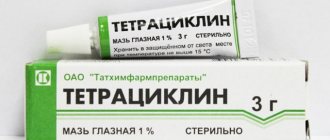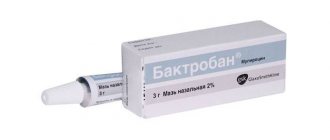Medicinal products in the form of ointments are used in the treatment of not only skin diseases. Thus, the hormonal ointment Hydrocortisone, known to many, successfully treats both atopic dermatitis and many eye diseases. Moreover, its effectiveness is several times higher compared to liquid preparations based on hydrocortisone.
The method of using the medication to treat a specific pathology is recommended by the doctor. In some cases, it is applied to the affected area in a thin layer, in others, it is rubbed into the skin or an ointment bandage is made. In addition, before using Hydrocortisone ointment, you must carefully study the instructions with the rules of use.
pharmachologic effect
The active substance of hydrocortisone ointment has a pronounced antiallergic and anti-inflammatory effect. It reduces inflammatory cell infiltrates, reduces the processes of migration of lymphocytes and leukocytes into the inflammatory area.
Hydrocortisone acetate also stabilizes subcellular and cellular membranes, including lysosomal membranes, as well as mast cell membranes, reduces the binding of immunoglobulins to receptors directly on the cell surface and inhibits the release or synthesis of cytokines (interferon, interleukins) from lymphocytes and macrophages.
Hydrocortisone acetate reduces the severity of the early immunological response, has an antimetabolic effect and inhibits the formation of connective tissue and scarring.
Special instructions for the use of ointment
The instructions included with the hydrocortisone-based drug contain several tips that are advisable to follow. stop wearing them during therapy .
If the treatment regimen includes not only the use of ointment, but also the procedure of eye drops, then a 15-minute interval must be observed .
Patients with glaucoma, if long-term use of the drug is necessary, should not forget about the need to control intraocular pressure .
If a patient's vision becomes blurry under the influence of hydrocortisone, it is better to refrain from driving .
In cases of drug overdose, a pronounced side effect of the drug may occur, but the patient’s signs of such a condition will go away on their own without the use of any additional measures.
Even with the most severe forms of eye diseases, do not use this hormonal remedy more often or for longer than recommended by your doctor.
Hydrocortisone eye ointment price
A drug for the treatment of eyes with an active substance - hydrocortisone - is sold in the pharmacy chain, and in addition to its high therapeutic effectiveness, it has another advantage. And for many buyers, a low price .
Additionally, hydrocortisone ophthalmic ointment is available in the market from different manufacturers. Thus, the product of the Tatkhimfarmpreparaty concern - Hydrocortisone eye ointment 0.5%, can be purchased by the buyer at a price of 45 rubles .
And 10 g of hydrocortisone 1% ointment, manufactured by the Biokhimik company (Saransk, Russia), will cost even less. Its price is 28 rubles. Three grams of Hydrocortisone 0.5% for the eyes in a tube produced by Elfa (Pharmzavod, Poland) in a pharmacy costs 118 rubles .
To achieve the required therapeutic effect, the patient must follow the instructions included with the hydrocortisone ophthalmic ointment, as well as follow the recommendations of an individual treatment regimen determined by the doctor.
In most reviews of the use of the medicine by patients, the fact of the rapid disappearance of swelling in the eye area is noted. And after the first application of the drug, everyone notes the positive result of its healing effect.
Pharmacokinetics
Hydrocortisone eye ointment does not penetrate well into the intraocular fluid through the orbit. It penetrates only into the epithelium of the mucous membrane and epidermis, can be absorbed in small quantities into the systemic bloodstream and subsequently have a systemic effect.
The drug is metabolized in the epithelium of the mucous membrane and epidermis. Subsequently, a small amount of it after absorption enters the systemic circulation and is further metabolized in liver cells. In the blood, the active substance binds to transcoritin (80%) and albumin (10%). Metabolites of the drug are excreted by the intestines and kidneys.
Instructions for use of Hydrocortisone ointment
Hydrocortisone eye ointment (0.5%; 1%; 2.5%) is prescribed for the treatment of inflammatory and allergic processes of the eye mucosa.
Due to its effectiveness in reducing local edema, hyperemia (overflow of blood vessels), eliminating the sensation of burning and swelling in the tissues of the eyes, it is one of the most popular drugs in ophthalmology.
Particularly severe forms of eye pathologies require the use of a hydrocortisone drug in combination with other therapeutic agents of local or systemic action.
Hydrocortisone eye ointment: indications for use
Hydrocortisone eye ointment allows you to achieve a therapeutic effect in the treatment of allergic eye damage with conjunctivitis, keratoconjunctivitis, blepharitis .
And also in case of inflammation of the anterior ocular region, if the integrity of the epithelium in the cornea is preserved. Lesions such as chemical and thermal burns can be treated with hydrocortisone only after the mucous layer has been restored.
In addition, the drug is actively used during the rehabilitation period after surgery. They also carry out the rehabilitation of inflammatory processes in the area of the eyelids, eyelashes, and iris.
Dosage and method of administration
The medicine is intended for topical use only. One centimeter of eye ointment is injected into the conjunctival sac two to three times a day. The course of treatment usually does not exceed two weeks. Its duration may in some cases be increased according to the recommendations of a specialist.
Similar effects
Sometimes the use of hydrocortisone ophthalmic ointment may be accompanied by the development of allergic reactions, burning, scleral injection, and short-term blurred vision.
When using the drug for more than ten days, an increase in intraocular pressure may be observed with the possible development of steroid glaucoma with direct damage to the optic nerve and partial impairment of visual fields.
Subcapsular cataracts and slower wound healing processes may also develop (in diseases that cause significant thinning of the cornea, possibly its perforation (perforation)).
Due to the suppression of the body's defense reactions, prolonged use of the ointment may result in the addition of a secondary bacterial infection. In acute purulent eye diseases, glucocorticosteroids can intensify or mask existing infectious processes. Also, with long-term use of the drug, fungal infection of the cornea may occur.
We recommend another article from this section - “Acyclovir ointment instructions for use”
You can find out for what diseases Tsiprolet eye drops are used, as well as the instructions and price of the drug, from this article.
Overdose
Overdose of hydrocortisone ophthalmic ointment is extremely rare. At the same time, there is an increase in local side effects. When the drug is discontinued, the overdose phenomena disappear on their own.
Composition and release form of the drug
An ointment with the active component hydrocortisone acetate, white-yellow in color, is intended for the complex treatment of inflammatory and allergic diseases of the skin and eyes.
The active ingredient of the drug - Hydrocortisone, being an adrenal hormone , has a strong anti-inflammatory effect that suppresses the body's immune response. That is, it prevents the occurrence of allergies.
In medical practice, the use of such hormonal drugs is advisable in cases where there are extensive lesions of the integument, and local treatment with non-hormonal agents has no effect.
When treating children with hydrocortisone ointment, it must be taken into account that this drug has side effects. Therefore, especially strictly adhere to the doctor’s recommendations regarding the scheme of its use, described in detail in the instructions.
The drug can be purchased in the pharmacy chain in the following forms:
- Hydrocortisone ointment for external use 1% (5 or 10 g tube).
- Hydrocortisone eye ointment 0.5% (tube of 10 g, 5 g or 3 g). And also Hydrocortisone eye ointment (2.5 grams in a tube) 1 or 5%.
When purchasing a drug, be sure to pay attention to its composition so as not to purchase a skin treatment product instead of an eye medicine. The fact is that hydrocortisone ointment for external use contains 0.01 grams of the active substance hydrocortisone acetate per 1 g, the base composition is lanolin.
Whereas in 1 g of eye product the content of hydrocortisone acetate is 0.005 grams, and the excipients are petroleum jelly and methyl parahydroxybenzoate.
That is, there is a difference . In addition, some patient reviews contain information that, due to their own carelessness, they developed health problems and required additional treatment.
External use of hydrocortisone ointment
Treatment with 1% hydrocortisone ointment is prescribed for the following pathologies:
- for atopic dermatitis and neurodermatitis;
- eczema;
- psoriasis;
- for simple and allergic dermatitis;
- for itching, including from insect bites;
- photodermatosis;
- lichen planus.
At the same time, the active substance of the drug, hydrocortisone acetate, when applied externally, has an anti-inflammatory, immunosuppressive and antiallergic effect on the affected area of the skin.
In accordance with the instructions, the medicine is applied in a thin layer to the lesions of the skin 2 or 3 times a day. And in cases of chronic inflammatory processes, ointment dressings are applied to the skin, which need to be changed after 24–48 hours.
With long-term use of hydrocortisone in the treatment of skin diseases in children over two years of age, parents strictly follow the doctor’s recommendations and be sure to monitor parameters such as weight, height, blood pressure, and glucose levels in the child’s blood.
In patients with systemic diseases (diabetes mellitus, tuberculosis, etc.), treatment and skin treatment with hydrocortisone is carried out with caution.
In what cases is the drug prescribed?
The prescription of a hormonal drug, as a rule, occurs with the development of the following pathologies:
- allergic eye diseases. This includes many different ailments, starting with banal barley and ending with conjunctivitis;
Conjunctivitis
- eyelid skin dermatitis;
- thermal or chemical burns;
- mechanical damage to the organs of vision, accompanied by bruising or swelling.
On a note! Depending on the type of disease, its neglect, as well as the patient’s health condition, the duration of the therapeutic course may vary. But to speed it up, doctors often prescribe the use of ultrasound therapy as part of complex treatment.
How to put ointment behind the eyelid
general description
- 6.1 Video: How to put ointment in the eyes
The drug is used to treat eye diseases only if the patient's corneal epithelium is not damaged. The active component of hydrocortisone ointment is hydrocortisone, a substance that is a drug of natural origin . In addition to ophthalmological diseases, this remedy is also used in oncology.
Hydrocortisone ointment
Hydrocortisone ointment, which is available in small tubes of 3 g or 5 g, also contains methylparaben and nipagin. It is recommended to store the ointment in a cool place at a temperature no higher than 15 degrees. Shelf life – 24 months. The drug is intended exclusively for topical use.
Composition and pharmacological action
Contraindications
Like all medications, hydrocortisone ointment has contraindications for use, which must be taken into account when treating a particular disease:
- corneal damage;
- development of glaucoma (this is a pathology accompanied by increased intraocular pressure);
- purulent infection;
- eye tuberculosis;
- ophthalmological diseases caused by various fungi or viruses.
Hydrocortisone ointment
But the main contraindications, of course, include individual intolerance to individual components of the drug. If a patient has been diagnosed with glaucoma, then throughout the entire therapeutic course he needs to regularly check intraocular pressure. Also, the check must be performed when using the ointment for a long time (more than 14 days).
It is strictly not recommended to use hydrocortisone ointment on your own or increase the course of therapy, as this can lead to serious consequences. Only a doctor can prescribe medication or make adjustments to the treatment course .
Allergic reaction
